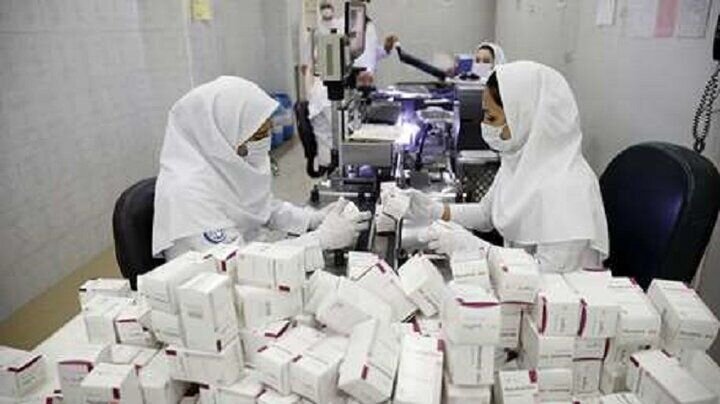TEHRAN- Despite sanctions, an Iranian company has managed to indigenize the production of alteplase - a vital drug for brain stroke, which was exclusively supplied by an American company.
Alteplase is the only drug for acute ischemic stroke (AIS). The inauguration of the alteplase production line has made Iran the world's second producer of medication.
Alteplase (t-PA), a biosynthetic form of human tissue-type plasminogen activator (t-PA), is a thrombolytic medication, used to treat AIS, acute ST-elevation myocardial infarction (a type of heart attack), pulmonary embolism associated with low blood pressure, and blocked central venous catheter. It is given by injection into a vein or artery.
Alteplase is the same as the normal human plasminogen activator produced in vascular endothelial cells and is synthesized via recombinant DNA technology in Chinese hamster ovary cells (CHO). Alteplase causes the breakdown of a clot by inducing fibrinolysis.
Alteplase is the only drug approved by the US Food and Drug Administration (FDA) for the treatment of AIS.
The vice president for science and technology, Ruhollah Dehqani-Firouzabadi, attended a ceremony to launch the alteplase production line on September 23.
He highlighted the country’s special status in the field of health, medicine, and treatment, and in particular, the field of biotechnology, Mehr reported.
“During the past years, we have mainly witnessed the growth and development of knowledge-based companies toward technological production and development, but the new generation of knowledge-based companies is also playing a key role in different sectors of the domestic economy, including food, health, and energy.”
The technology used by the Iranian knowledge-based company has made this product available at a competitive price to both national and international markets.
Export of medicine sharply rise
Iran has experienced a significant rise in exports of medicine and medical equipment in the first four months of the current Iranian calendar year that started on March 21.
In August, Heidar Mohammadi, the head of the Food and Drug Administration said, “Exports of pharmaceuticals and medical equipment grew by 300 percent in the first four months of the year.”
Last year, some 1,060 trillion rials (about $2.1 billion) worth of medicine and medical equipment were manufactured inside the country, he added.
Around 99 percent of the medicine supplied to the domestic market is produced by Iranian companies, he highlighted.
Iran plans to increase the exports of medicine to around $200 million in the current year from some $60 million last year, Mohammadi said in April.
Currently, the production of medicine, medical equipment, and powdered milk is supported by subsidies. So, their exports were very limited, but it is hoped that their exports will increase next year, he explained.
Referring to the shortage of 100 drug items in the country, he said: “Currently, nearly one and a half percent of the country's pharmaceutical need is imported. Along with domestic production, it is done as soon as the domestic production meets the demand.”
A total of 227 knowledge-based firms are supplying medical equipment for health centers across the country, according to the Vice Presidency for Science and Technology.
Iranian-made pharmaceuticals are currently exported to Canada, Japan, and Europe, Faramarz Ekhteraei, chairman of the Iranian Pharmaceutical Industries Syndicate said, emphasizing that 72 percent of the country's pharmaceutical raw materials are domestically produced.
Some 40 percent of the country's total pharmaceutical exports are biotechnology products, a member of the board of directors of the Association of Manufacturers and Exporters of Medical Biotechnology Products said.
TAGS


No comments:
Post a Comment